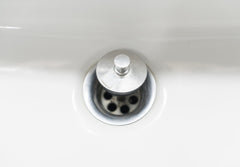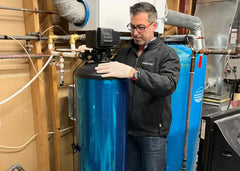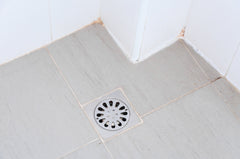Dealing with a clogged kitchen sink garbage disposal can feel like a relentless battle. It’s frustrating when you’re about to clean up after dinner, and the water starts pooling instead of draining. Garbage disposals are great for handling food waste but can easily get clogged if not taken care of properly. So, what do you do when you need to unclog a sink garbage disposal effectively?
You'll find a range of practical tips to help you troubleshoot and fix common clogging issues. Understanding the causes and recognizing the signs of a blockage can save you time and prevent potential damage to your disposal unit. Let’s explore ways to keep your sink flowing smoothly without the hassle of repeated clogs.
Identifying the Problem
Before you can fix a clogged garbage disposal, you need to know what’s causing the problem. It’s usually pretty straightforward, but several factors could be at play. Here’s a quick guide to identify whether your kitchen sink disposal is clogged and what’s causing it.
1. Signs of a Clogged Disposal:
- Water is draining slowly or not at all.
- There’s an unpleasant odor coming from the sink.
- The garbage disposal makes a low humming noise.
- Overflows occur when using the sink or dishwasher.
2. Common Causes:
- Food Scraps: Certain foods like potato peels or fibrous vegetables can wrap around the blades and clog the pipes.
- Grease Buildup: Pouring grease down the sink may not cause immediate issues, but over time it solidifies, narrowing the pipes and leading to clogs.
- Non-Food Items: Accidentally dropping something like a utensil or sponge into the disposal can create a blockage.
3. Why It Matters:
- Ignoring a clogged disposal unit can lead to more severe plumbing problems.
- Persistent blockages can damage the unit, leading to costly repairs or replacements.
Being aware of these signs and causes is the first step in addressing the issue before it worsens. Active communication within your household about what can and cannot be put in the garbage disposal can prevent future clogs from occurring. By taking note of these indicators, you’re already halfway to solving your disposal conundrum.
Basic Troubleshooting Steps
To tackle a clogged disposal effectively, start by identifying the blockage. First, ensure the disposal is switched off to prevent accidents. Then, use a flashlight to peek inside the disposal and look for any visible items that might be causing the clog. Remember to never put your hand inside the disposal unless you're sure it's completely turned off.
Here’s a simple step-by-step approach to locate and address blockages:
1. Turn off the power: Unplug the disposal or switch off the circuit breaker.
2. Check with a flashlight: Shine a light inside and look for anything stuck.
3. Use long-handled tools: Try tongs or pliers to remove obvious obstructions.
4. Gently rotate blades: Use a wooden dowel or similar tool to twist the blades manually, clearing debris.
After following these steps, if the blockage persists, it might be time to try something a little more aggressive.
When to Use a Plunger or a Snake
For minor clogs, sometimes a plunger can do the trick. Fill the sink with a bit of water and use the plunger over the drain to dislodge whatever might be blocking it. Make sure to cover any other drains the sink might have to create suction.
If a plunger fails to clear the clog, a plumbing snake might be more effective. These coiled tools are designed to reach further into pipes and break up stubborn blockages.
- For plunging:
- Make sure there’s enough water in the sink to cover the plunger's rubber part.
- Use firm and steady motions to create suction and move the blockage.
- For snaking:
- Insert the snake into the pipe, turning the handle to force it through.
- When you hit the blockage, move it back and forth to break it up.
- Retrieve the snake, cleaning it afterwards.
Both methods can often make a big difference. However, if neither works, professional help may be needed.
Preventive Measures
Prevention plays a key role in maintaining a clog-free kitchen sink. Start with easy habits like avoiding pouring grease or oils down the drain. When disposing of food, aim to discard large pieces in the trash before flushing the smaller remnants.
Additionally, consider these preventive tips:
- Scrape plates before rinsing dishes.
- Avoid fibrous or starchy foods in the disposal, such as celery and pasta.
- Run cold water during and after using the disposal to help move waste down.
Routine maintenance like regular cleaning can also prolong the lifespan of your garbage disposal. By keeping these tips in mind, you can enjoy a more efficient kitchen with fewer disruptions.
Keeping Your Kitchen Drain Clear
Maintaining a clean kitchen sink not only saves you from future headaches but also keeps your home running smoothly. Regular checks and mindful habits ensure the disposal unit remains in top condition. Remember the importance of these preventative measures and whether you choose to tackle maintenance yourself or seek professional assistance, addressing problems promptly pays off in the long run.
In the end, taking a little time to care for your garbage disposal prevents many common issues. With vigilance, you can keep your kitchen sink running freely and effectively, cutting down on the frequency of pesky clogs and getting back to enjoying your time in the kitchen with minimal disruptions.
To ensure your sink stays clear and functions smoothly, consider integrating proactive measures into your routine. With the right tools and awareness, you can save yourself from the hassle of dealing with clogs. Discover how The Shroom Company can help you unclog sink garbage disposal effectively using innovative solutions like the Kitchen SinkShroom. It’s a small step toward hassle-free kitchen maintenance that makes a big difference.




0 comments